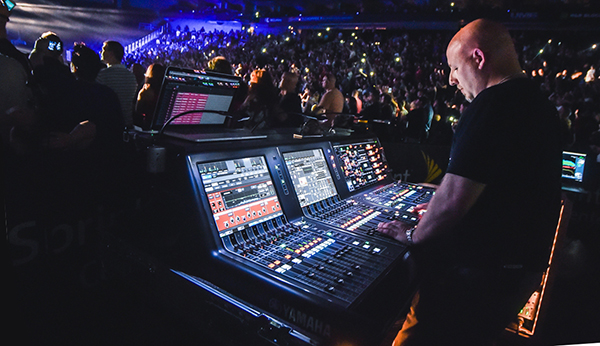While there are plenty of multi-talented folks who mix both front of house and monitors, and maybe also count PA system teching amongst their skills, there are many engineers who lean towards one discipline and become known exclusively for that. It’s a good idea for anyone starting out in live audio to get a strong grounding in all areas – it makes you a better engineer all round and maximizes your usefulness and employability – but the day may come when you find that you’ve specialised in one role, either by accident or design.
In my early days I spent five years learning the craft of live audio from the ground up; but having become competent across a broad base, it became clear that mixing monitors was the path that best suited my personality and interest. It helped that I had a wonderful teacher and mentor in Fred “Gumby” Jackson, a brilliant monitor engineer who counted Bruce Springsteen and Patti LaBelle amonst his credits – he could see traits in me that would serve me well mixing monitors, and generously shared his time and knowledge. Likewise, I’m married to a front of house engineer (Chris Pyne) who, after learning the ropes, realized that being out front was his true calling.
But what if the path isn’t so clear? There was an interesting thread recently on the Soundgirls Facebook group from a member wondering which way to go – or indeed whether to specialize at all. So, what are the pros and cons of mixing FOH versus monitors?
FOH Pros
Creativity. Out front, although you’re obviously mixing for the crowd, you’re essentially mixing for yourself – you don’t do something if you don’t like how it sounds – so it’s all down to your preferences.
Personal satisfaction. When the mix sits “just right,” there’s huge fulfilment in enjoying the audio art that you’ve created.
Reflected glory. When a band is flying high and it all sounds great, you can bask in the glow of a job well done.
Atmosphere. There’s a fantastic group energy when an audience loves a gig, and you get to be right in the middle of it.
Less band politics. With less focus on managing the different personalities, your job is to shape the sounds they’re creating.
FOH Cons
Variable acoustics. You’re at the mercy of the venue design. Some of them restrict your capabilities considerably, and it changes with every load-in.
Exposure. Everyone has an opinion, whether they know what they’re talking about or not, and these days, it’s not just limited to the time when you’re at FOH – the internet means that the “expert” opinions on social media keep on coming long after the trucks are loaded.
Pressure. Managers, producers, promoters, and performers’ partners will all be out front and have an opinion about your mix. If they don’t like what you’re doing, it can lead to an unhappy result.
The “social club.” Some audience members don’t always respect the fact that you’re working and trying to concentrate, and will carry on their conversations right behind you. Bonus points for keeping your cool with those who use equipment as tables for their drinks…
Weather and wind at outdoor gigs. FOH is generally more exposed than monitors, and line array PA systems in particular can suffer badly in the wind when the sound gets blown off course.
Visibility. As the most identifiable member of the touring crew, you have to field frequent audience requests for phone charging/restroom locations/band meet and greets – and – “Hey, are you the DJ?”















